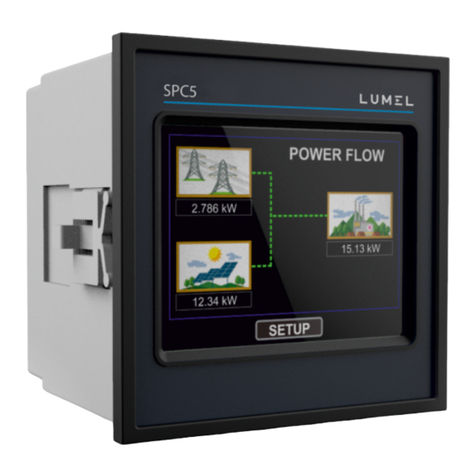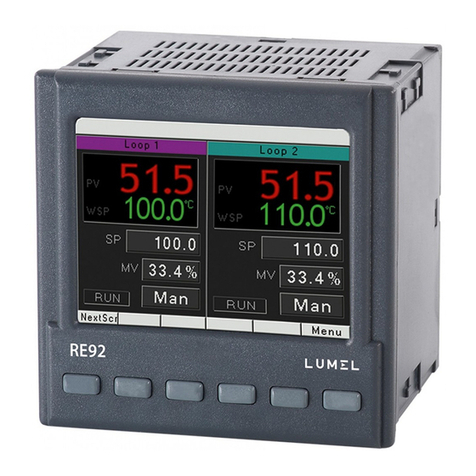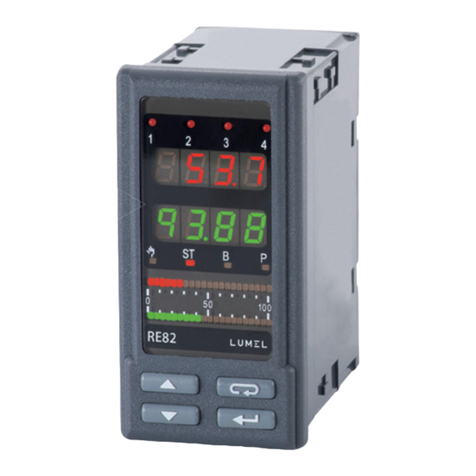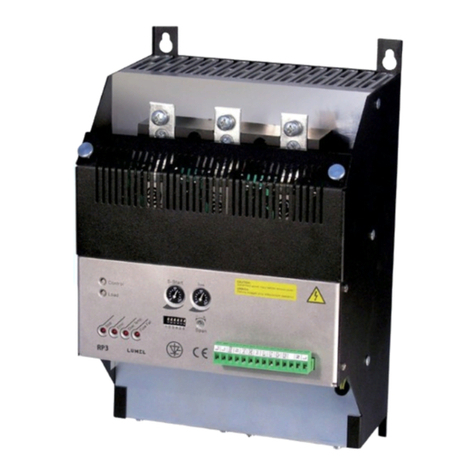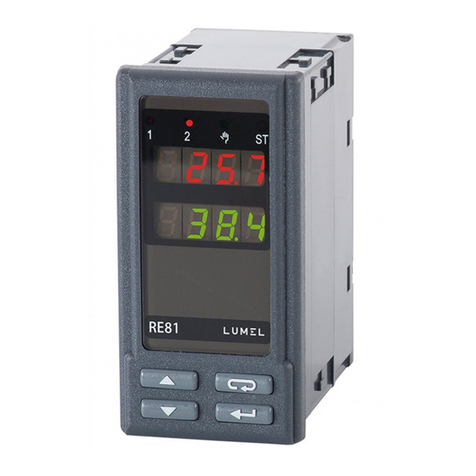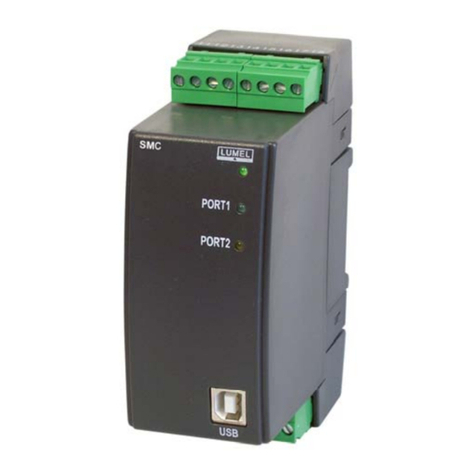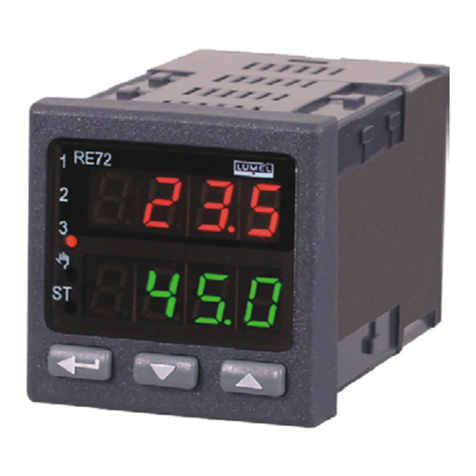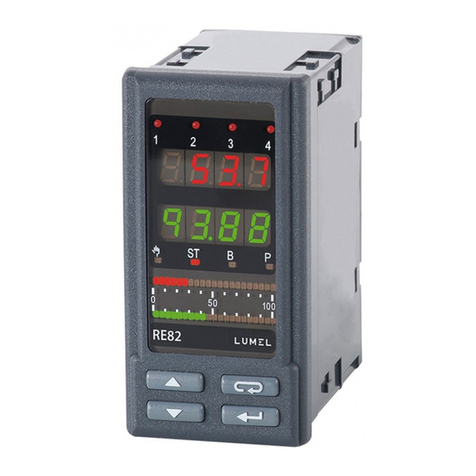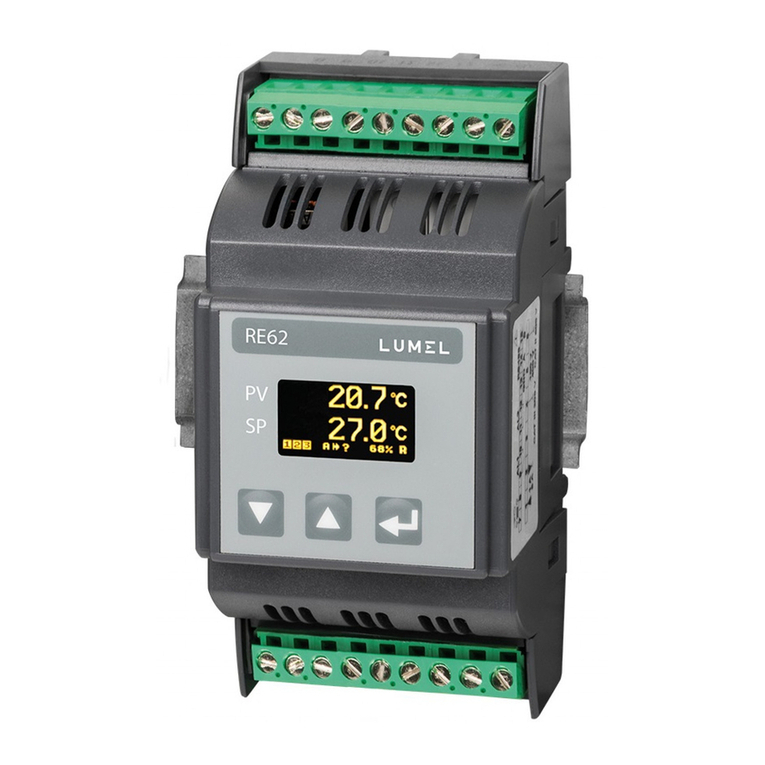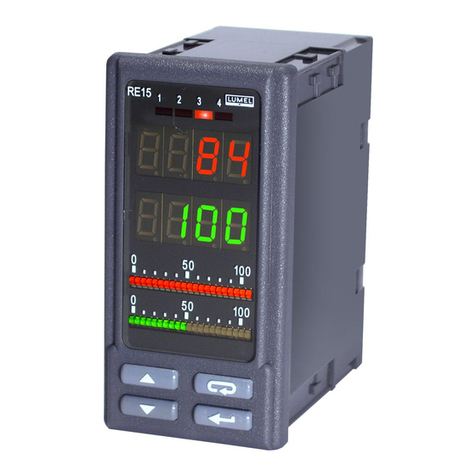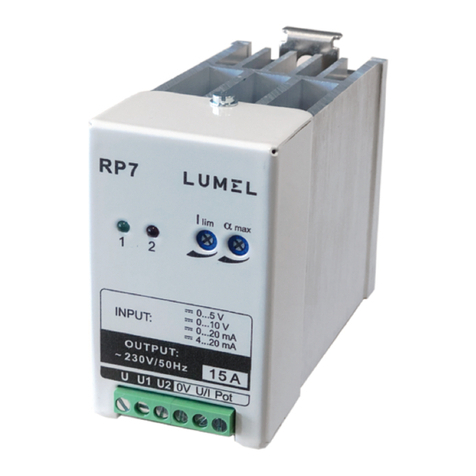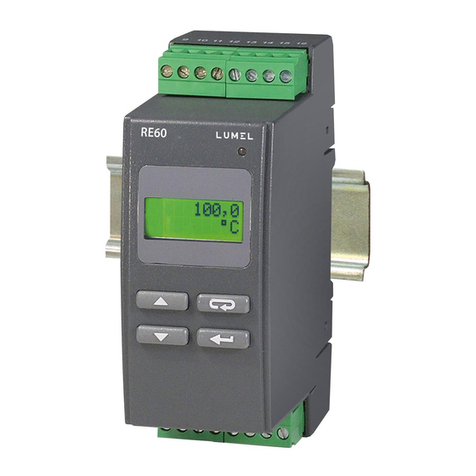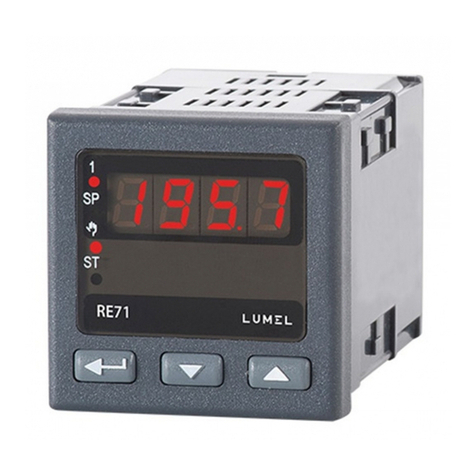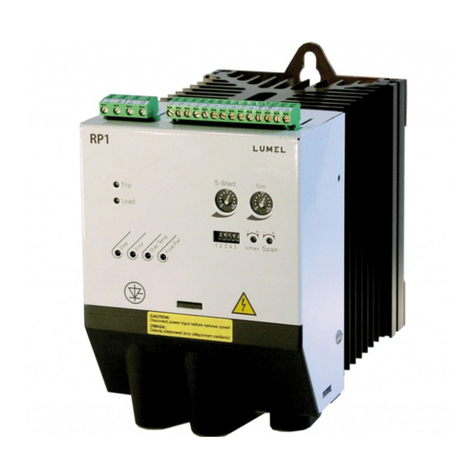
8
4. Electrical connection
- Before switching the instrument on, one must check the correctness
of connection to the network.
- In case of the protection terminal connection with a separate lead
one must remember to connect it before the connection of the
instrument to the mains.
- When working on live instruments, the applicable national regulations
for the prevention of accidents must be observed.
- The electrical installation must be carried out according to the
appropriate regulations (cable cross-sections, fuses, PE connection).
Additional information can be obtained from the users manual.
- The documentation contains information about installation in
compliance with EMC (shielding, grounding, filters and cables).
These notes must be observed for all CE-marked products.
- The manufacturer of the measuring system or installed devices is
responsible for the compliance with the required limit values
demanded by the EMC legislation.
5. Operation
- Measuring systems including RE60 controllers must be equipped
with protection devices according to the corresponding standard
and regulations for prevention of accidents.
- After the instrument has been disconnected from the supply
voltage, live components and power connections must not be
touched immediately because capacitors can be charged.
- The housing must be closed during operation.
6. Maintenance and servicing.
- Please observe the manufacturers documentation and read all
product-specific safety and application notes in this users manual.
- Before taking the meter housing out, one must turn the supply off.
- The removal of the instrument housing during the warranty
contract period may cause its cancellation.
When unpacking the controller, please check whether the type
and version code on the data plate correspond to the order.
